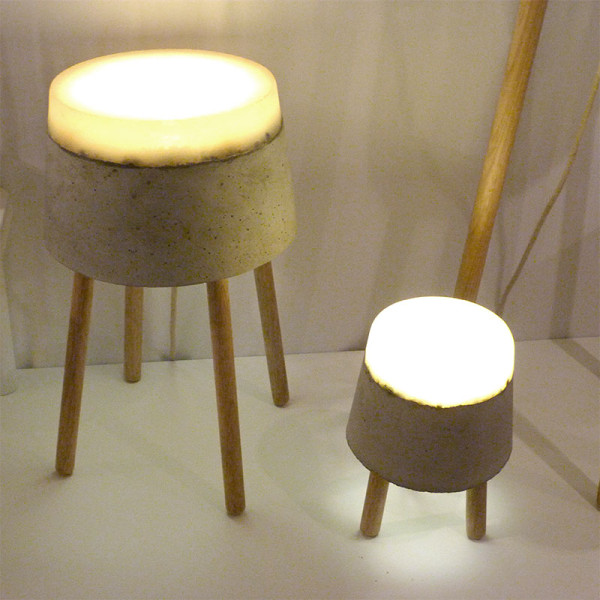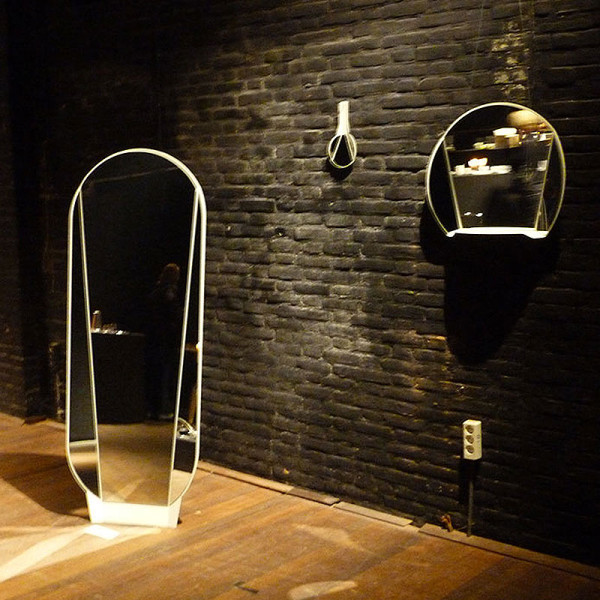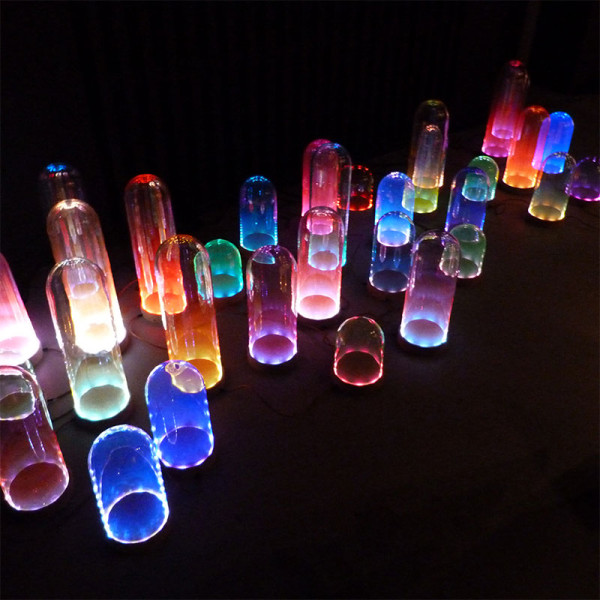Eindhoven feels like a city of possibilities. It’s an industrial city, once populated by textile and cigar factories and latterly the Phillips empire—it’s now full of huge empty buildings. This could make it feel like its time has passed, but the creativity, optimism and confidence of this city makes it feel like it’s the brink of its big moment. Dutch Design Week offered incredible diversity—of disciplines, of new versus established designers and of applied versus conceptual work. These are just some of the things that caught my eye.
The Temporary Art Centre (TAC) presented Zona Ventosa: 12 exhibitions showing work from young designers from the Netherlands and further afield which the curators promised would: “offer an exciting glimpse into the future.” I was immediately drawn to David Derksen’s Oscillation Bowls. He says: “With gravity as the acting force, these bowls are painted by a pendulum revealing a hidden pattern that exists in nature.”
An enterprising group of four BA Students from Plymouth University in the UK is experimenting with pellets made from waste car tires to create materials for the design industry. Carlotta Barker said: “Tires are the focus of this project because they are a waste material there is a huge abundance of. By using them in our designs we can reduce the number that are burnt as fuel—a process which releases a vast amount of toxic chemicals into the atmosphere.”
Fenna Oosterhoff says her lamps, vases, bottles, and other ceramic products (including buttons made from leftover clay) are inspired by: “…the proportions, patterns and textures which occur in nature.” She says: “To me the tactile value of a product is important.” Strong lines and geometry combined with curves to give her work a distinctive silhouette.
A design-filled greenhouse surrounded by camp fires, a sleeping hut, and a chicken coop made up Rechargeables: “a place where everything is possible.” The designers were asked to create useable items that would give people energy and were given complete freedom in how they responded to that brief. The windmill by Jonathan Hofmeijer and Babke Dekker made lemonade!
CrowdyHouse is a new crowdfunding platform especially for designers. When enough people order a product, the designer can put it into production without the usual upfront costs and associated risks. Studio Thier & Van Daalen collect waste from a plastics extrusion factory by simply placing a container on the floor and allowing liquid plastic to fill it. They then cut it open to reveal the incredible pattern inside—and turn it into a bench by adding legs. The funding from Crowdy House will enable them to make their first run of 10 benches.
Studio Nic Roex is launching four new colors of the Batsenkruk (buttocks stool), a subversion of a recognizable form. They say: “By cooperating with CrowdyHouse, new color variants ocher yellow, orange, mint green, and ice blue can be tested with consumers.”
Renate Vos’ lamps are made from concrete and silicon rubber hand poured in his own atelier. Designers have six weeks to hit their funding targets and prove a market for the products before they make them.
I was very privileged to be given a tour of the Self Unself exhibition at the Van Abbemuseum by curator and Design Academy Eindhoven Creative Director Thomas Widdershoven. The theme ‘Self Unself’ examines the tensions between the designer and communities affected in one way or another by their designs. The exhibition contains works by alumni, designers, and artists related to Design Academy Eindhoven. Thomas is standing in front of Cosmetic Surgery Kingdom by Bora Hong. Saddened by the amount of young girls contemplating plastic surgery, she asked her friends and family what they would change about her face and illustrated their responses.
Thomas Widdershoven said: “Out of all the work by Hella Jongerius I am showing the work she did for KLM, because it marks a venture outside the realm of culture for her. I am curious to find out how much of herself she is sacrificing and how much of herself she is able to retain when working with a client who has such a strong identity.”
A room entitled “Celebrating the work of others” included a collection of photos a woman had had taken of herself every year at the fair where she worked, and a collection of jumpers knitted but never worn.
During Dutch Design Week 2013, the Heritage Barracks was open to the public for the first time in many years. It was transformed into Eat Drink Design: a pop-up restaurant surrounded by an exhibition of contemporary design and applied arts.
Ontwerpduo’s Split Mirror was new for DDW13. It’s made from one sheet of coated metal, which is folded to split the mirror, so you can see yourself three times, each time from a different angle.
And finally Ralph Nauta’s gorgeous lights which work together as an art installation for the exhibition and will be sold separately as commercial products afterwards.
Our trip to Eindhoven was supported by Airbnb.com.

































